The village of Tuke viewed from the air. Photo: © Tiana Reimann
The Tuke Rainforest Conservancy is located deep in the dense virgin rainforests of the Nakanai Mountains in the central, eastern interior of the island of New Britain; which sits off the east side of Papua New Guinea (PNG). New Britain is a relatively large island of 35,742 sq km.
Conservation International’s RAP Bulletin of Biological Assessment published in 2011 describes the location as ‘one of the last major tropical island wilderness areas in the world, and one of the least explored on earth!’
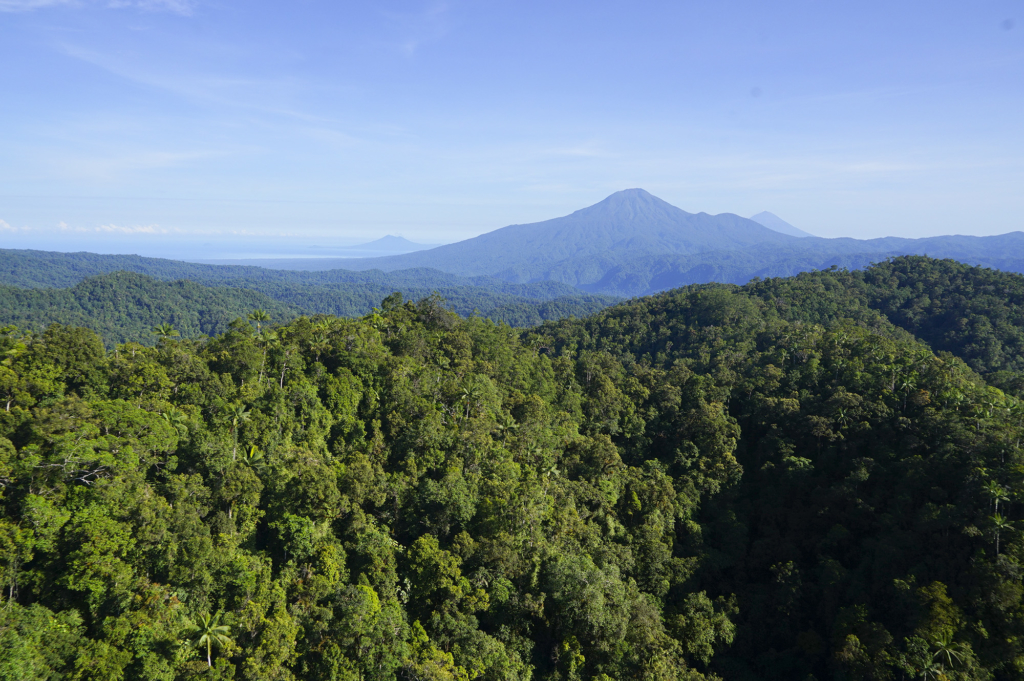
The breathtaking forest canopy of the Nakanai Mountains in New Britain. Photo: © Alan Smuskowitz
The Nakanai Mountains boast a landscape of extreme natural beauty and geological interest with six active volcanoes. Rising out of the coastal plains, this mountain range forms part of the island’s central spine that separates East New Britain from West. It is home to a combination of lowland and montane rainforest.
Some of the world’s largest rivers flow underground here, emerging from cave systems high in the mountains to form spectacular waterfalls that cascade into kilometre deep gorges.
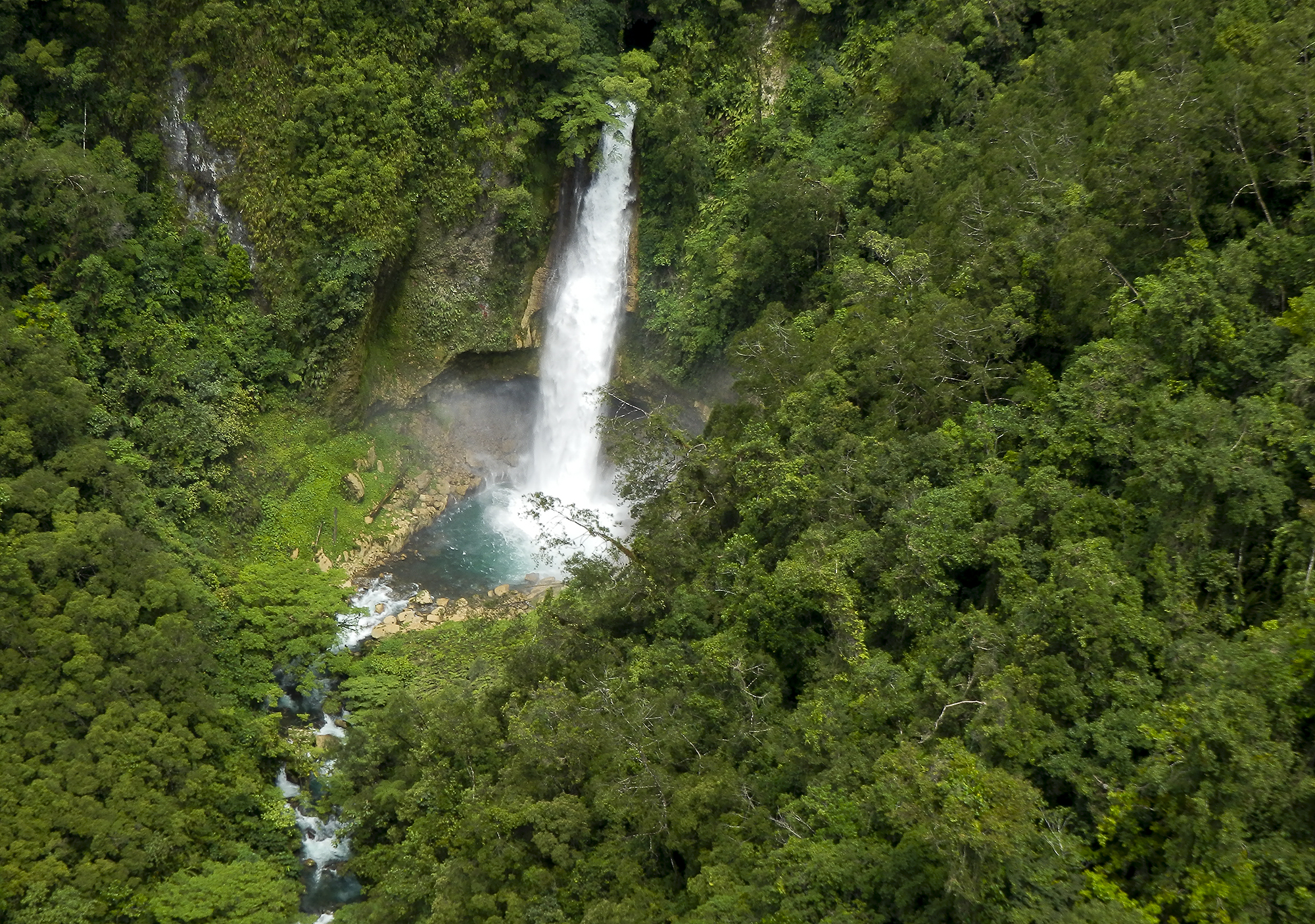
New Britain boasts some of the largest underground river systems in the world that flow
out of caves high in the mountains. Photo: © Richard Remann / Baia Sportsfishing Lodge
The area has a relatively small community, who have maintained their traditional culture and practice a hunter-gather lifestyle with simple agriculture.
The Nakanai Mountains were proposed as a World Heritage site in 2006 by the PNG government and currently remain on the Tentative World Heritage list.
The area boasts an extraordinary variety of plant and animal life and a treasure trove of undiscovered biological diversity.
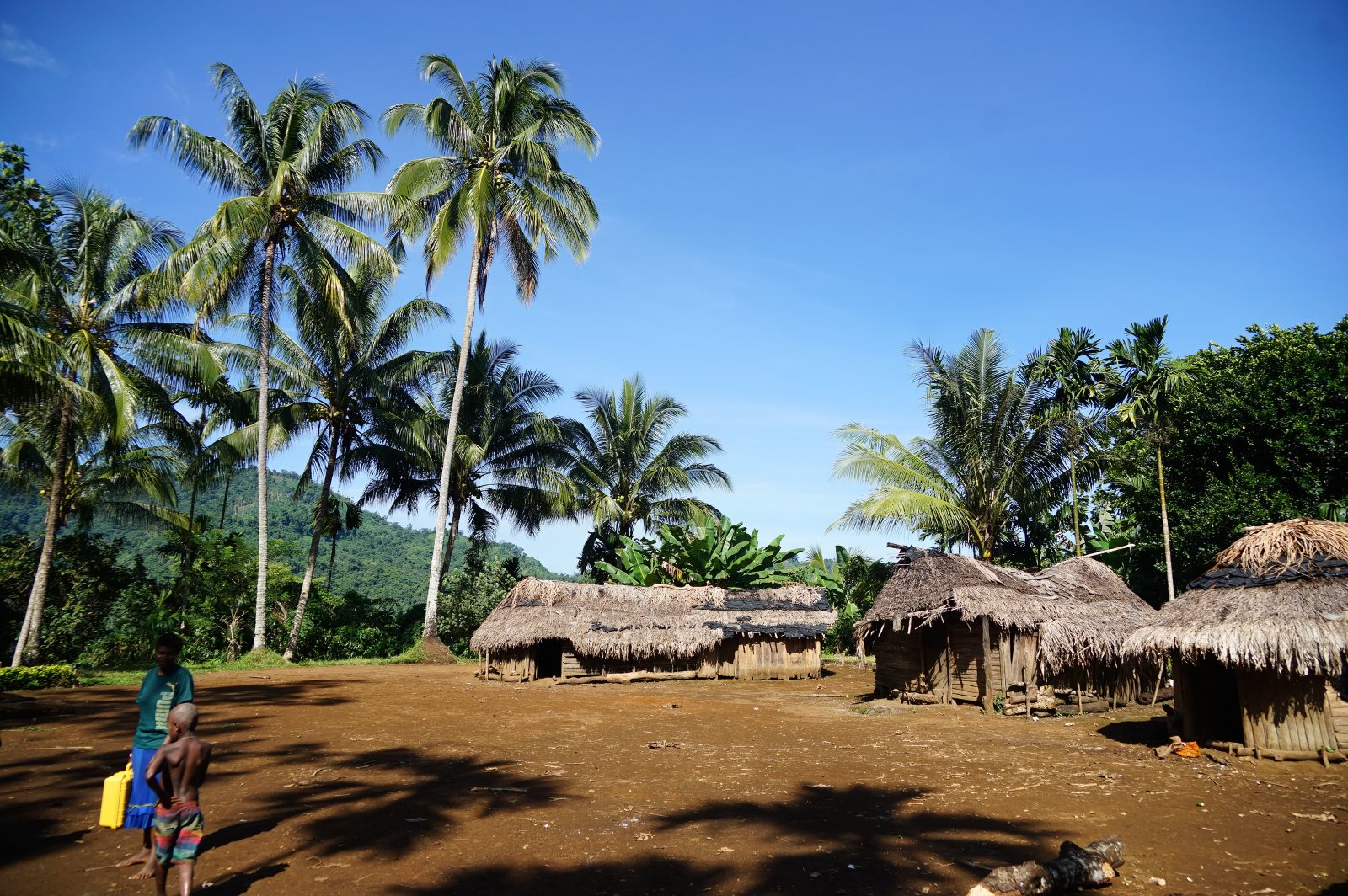
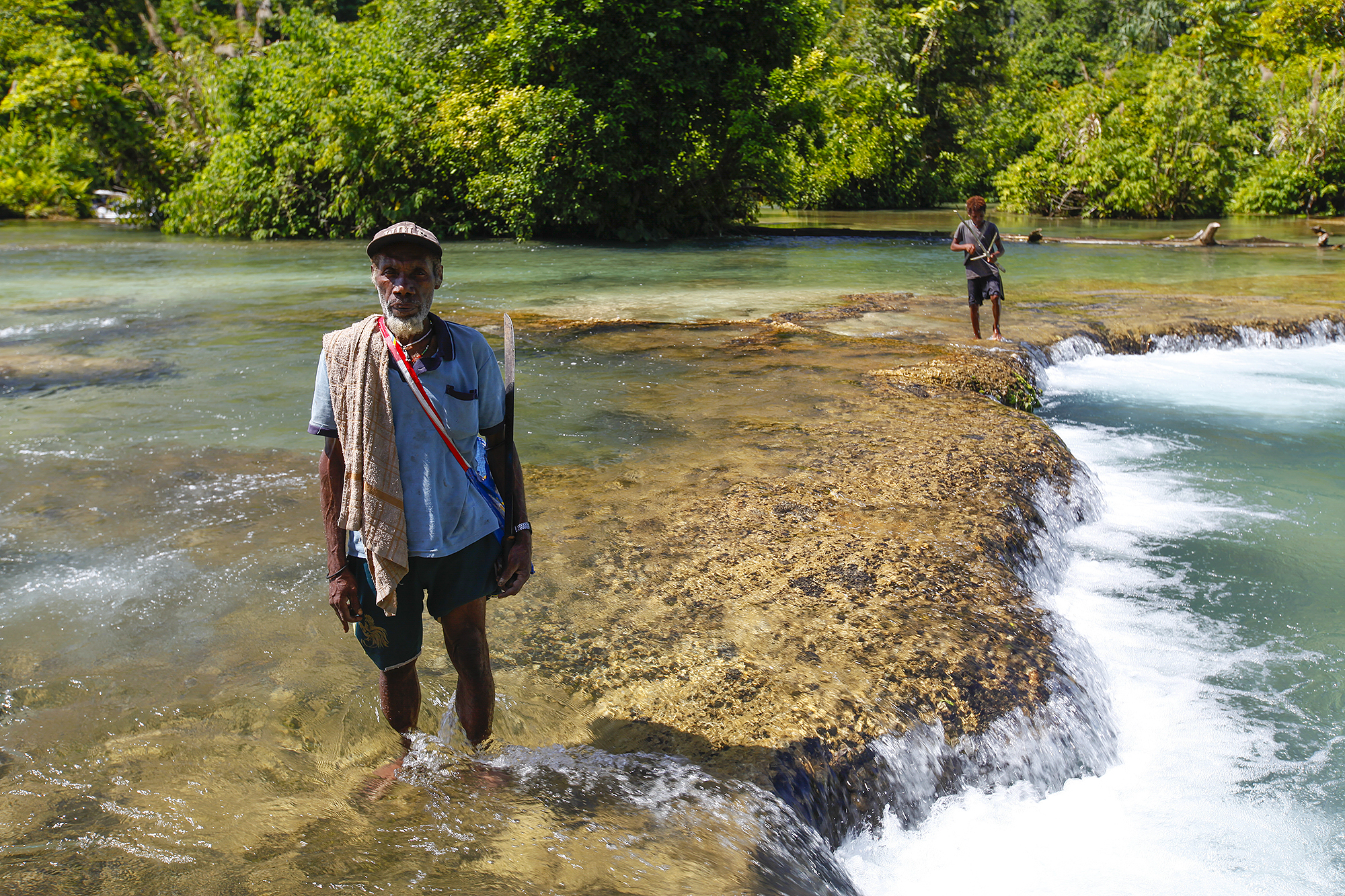
The people of Tuke continue to practice their culture and traditions in the forest in which they have lived for thousands of years. Photo: © Alan Smuskowitz / WildArk
The Conservation International study confirmed that many species that inhabit the area are of enormous biological significance including ants, katydids, dragonflies, spiders, herpetofauna, birds, and mammals. Many of the species are found nowhere else on earth and some, are completely new to science.
Notable bird records in New Britain include the Song Parrot (Geoffroyus heteroclitus) Slaty-backed Goshawk (Accipiter luteoschistaceus), New Britain Bronzewing (Henicophaps foersteri), White-mantled kingfisher (Todirhamphus albonotatus), Rusty Thicketbird (Megalurulus rubiginosus). Mammals recorded include Northern Common Cuscus (Phalanger orientalis breviceps), Browns Pademelon (Thylogale browni), New Britain naked-backed fruit bat (Dobsonia praedatrix ), Northern blossom-bat ( Macroglossus minimus nanus), Umboi tube-nosed fruit bat (Nyctimene vizcaccia), Common Blossom Bat (Syconycteris australis), Small Melanesian Bent-winged Bat (Miniopterus macrocneme), Bent-winged bats (Miniopteris sp. cf. M. medius), Dark sheath-tailed bat (Mosia nigrescens), Common spiny bandicoot (Echymipera kalubu).
There are also mangrove swamp forests, estuarine crocodiles, and leatherback turtles. The coral reefs cradle the shore and have an enormous diversity of coral and marine life. Coral counts have revealed an incredible 413 species of hard coral — more than half the world’s total hard coral species in one place — and more than 900 species of fish.
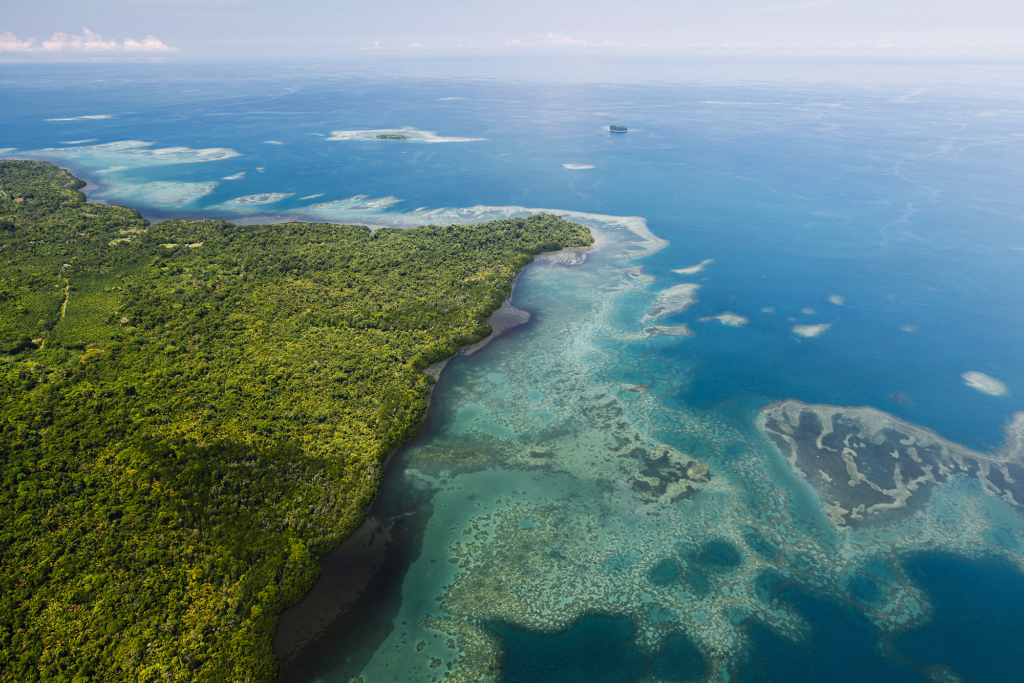
The coral reefs cradle the shore and have an enormous diversity of coral and marine life. Photo: © Alan Smuskowitz
Currently, habitat loss from illegal logging and oil plantations is the biggest threat to the biodiversity. The palm oil industry is having a significant impact on the landscape and the livelihood of local people, with enormous rates of deforestation (Buchanan et al.2008). Lowland forests have suffered intensive logging, more so than any other part of the island leaving the pristine forests only on mountain slopes too steep for logging equipment. (Lindemalm and Rogers, 2001).
References:
